Analysis of the Market Size and Development Prospects of the Global Ultrafast Laser Industry in 2021
Source: This website time:2021-05-14 browse:1124
As an ultra short pulse laser, ultrafast lasers are widely used in industrial microfabrication, scientific research applications, precision medicine, aerospace, additive manufacturing, and other fields due to their advantages of precision machining, ultra short pulses, ultra strong characteristics, and the ability to focus on ultra fine spatial areas without affecting the surrounding materials in the spatial range involved during the processing.
The current market share of ultrafast lasers in the entire laser market is still very low, less than 20%, and there is still significant room for growth. With the continuous development and maturity of ultrafast laser technology and the continuous increase in downstream applications, ultrafast lasers worldwide are expected to develop rapidly and have broad prospects for development.
Laser is another major invention in the 20th century, following nuclear energy, semiconductors, and computers. It is widely used in industrial manufacturing, biomedicine, military, and other fields due to its excellent monochromaticity, directionality, brightness, and other characteristics. Laser is a device for generating laser light, mainly composed of pump source, gain medium, resonant cavity, etc. The operation mode of laser is the technical core of laser. According to the operation mode, it can be mainly divided into continuous laser and pulse laser. Ultrafast laser is an ultra short pulse laser.
There is still a lot of room for growth in ultrafast lasers
Laser has the characteristics of good directionality, high brightness, good monochromaticity, and high energy density. Developed countries such as Europe and America first began to use lasers in various industries such as processing and manufacturing, and then laser technology was transferred to developing countries such as China and other manufacturing giants.
According to Laser Focus World data, the global laser market continued to grow from 2013 to 2019, with a market size of $14.7 billion in 2019. In 2020, despite the impact of the COVID-19, economic recession in some regions, and social and political turmoil, the global laser market still maintained a relatively stable growth. Laser Focus World preliminarily estimated that the total revenue of the global laser market would grow to 16 billion dollars in 2020. It is expected that the market performance would be stronger in 2021, with the revenue growth rate expected to reach 15.5%, and the global laser industry market size would reach 18.5 billion dollars.
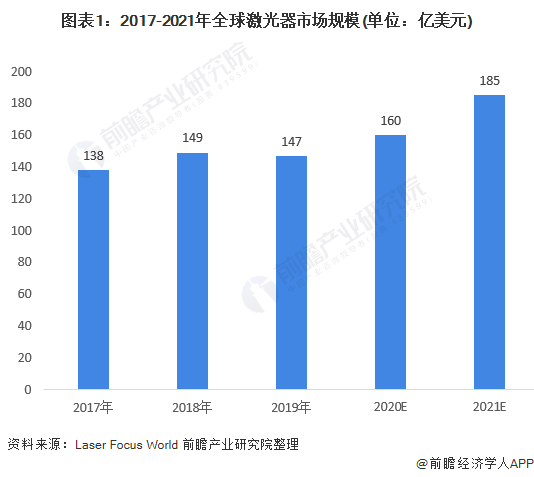
Ultrafast lasers are mainly ultra short pulse lasers with extremely short pulse duration and high instantaneous power. The energy is focused on a very small spatial area and is not affected by pulse repetition frequency and average power. The beam quality is continuously stable, mainly including picosecond (10-12s) lasers, femtosecond (10-15 s) lasers, and attosecond lasers.
The global ultrafast laser market continues to grow in size, with a total market value of approximately 1.6 billion US dollars in 2019 and 1.8 billion US dollars in 2020.
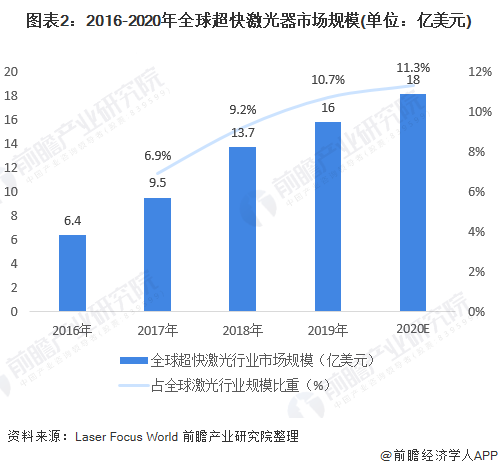
Ultrafast laser technology is gradually making breakthroughs
From the development of ultrafast laser technology, in order to improve the output power of pulse lasers, increase energy density, and control thermal effects, the industry has developed various modulation techniques, mainly including Q-switching technology, mode locking technology, tunable technology, chirped pulse amplification technology (also known as CPA technology), and main oscillator power amplification technology (also known as MOPA technology). In 1985, ultra short pulse CPA technology had already emerged, and the research and application of ultrafast lasers entered a new stage.
Unlike traditional long pulse lasers and continuous lasers, ultrafast lasers, with advanced technology and excellent characteristics, can solve many processing problems that are difficult to achieve with conventional methods, such as high precision, sharpness, hardness, and difficulty, achieving super strong processing capabilities, processing quality, and processing efficiency.
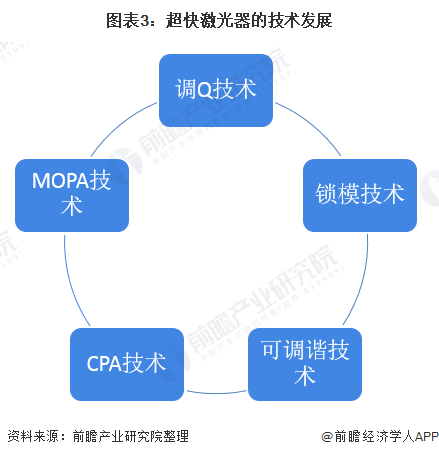
The demand for ultrafast laser applications continues to expand
From the perspective of ultrafast laser applications, ultrafast lasers have shown excellent performance in industrial microfabrication, scientific research applications, precision medicine, aerospace, additive manufacturing and other fields due to their precision machining, ultra short pulses, ultra strong characteristics, and the ability to focus on ultra fine spatial areas, obtaining extremely high peak light intensity with low pulse energy, and not affecting the surrounding materials in the spatial range involved during the processing.
In the field of industrial microfabrication, ultrafast lasers (picosecond, femtosecond lasers) have begun to be widely applied, with clearer application directions and clearer product specifications requirements; At present, the main application areas of ultrafast lasers are concentrated in the processing of brittle materials, such as irregular cutting of LCD screens for mobile phones, cutting of sapphire cover plates for mobile phone cameras, cutting of glass cover plates for mobile phone cameras, marking of special materials, anti-counterfeit colorful marking, traceable glass invisible QR code marking, processing of heat sensitive thin film materials, high-performance FPC cutting, cutting and punching of OLED materials, processing of solar PERC cells, and other applications.
In the field of precision medicine, due to the precise focusing of lasers on small areas, they can replace surgical knives for precise tissue cutting or destruction, medical beauty, and other procedures.
In the aerospace field, ultrafast lasers have the characteristics of high efficiency, low energy consumption, short process, good performance, digitization, and intelligence. Laser technology plays an increasingly important role in the aviation manufacturing industry. Based on the principles and advantages of ultrafast laser processing technology, its current application areas in aviation manufacturing mainly focus on high-performance components of difficult to machine materials, high-performance components of ultra-high precision, and components that achieve high performance through cross scale effects.
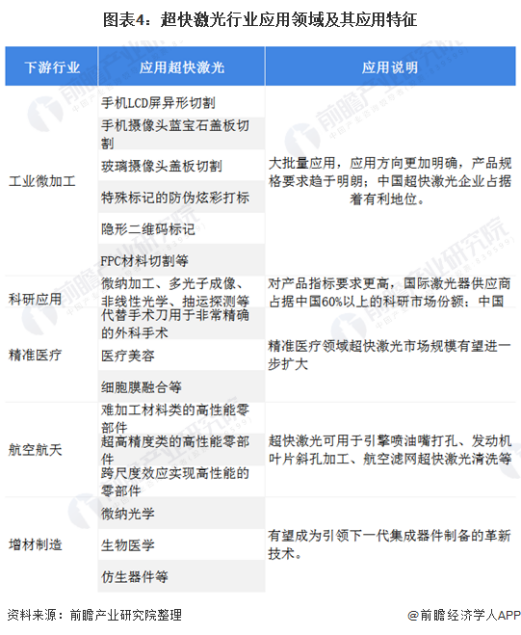
Global ultrafast lasers are expected to develop rapidly
With the continuous development and maturity of ultrafast laser technology, as well as the continuous increase in downstream applications, there is still significant room for growth in the ultrafast laser market. According to Laser Focus World statistics and forecasts, the global laser market size growth rate in 2021 is 15.5%, and the total growth rate of the global ultrafast laser market is faster than the growth rate of the entire laser market. It is expected that the global ultrafast laser industry market size will be about 5.4 billion US dollars by 2026.
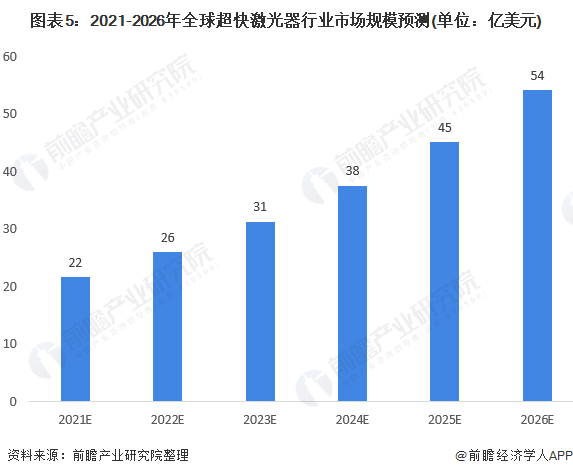
The demand for ultrafast laser applications is high, and its current market share in the laser market is still very low, less than 20%. There is still significant growth potential and broad development prospects.